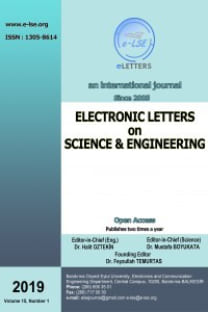Asagi Sakarya Nehrindeki Aski Maddesi Miktarinin Yapay Sinir Aglari, Bulanik Mantik ve Sinirsel Bulanik Modelleri ile Tahmin Edilmesi
Akarsu yapilarinin planlanmasi ve projelendirilmesinde nehirdeki kati madde tasinimi miktarinin tahmini, akarsu üzerine yapilan tesislerin ekonomik ömrünün belirlenmesi açisindan önem arz etmektedir. Genellikle kati madde miktari ya aski maddesi sediment gözlem istasyonlarindan yapilan dogrudan ölçümlerle ya da literatürde olan kati madde tasinim formülleriyle belirlenmektedir. Aski maddesinin dogrudan akarsudan ölçüm metoduyla belirlenmesi en güvenilir yol olmasina ragmen zaman alan ve maliyetli bir yöntemdir. Bir çok gözlem istasyonundan su debisi ölçülmesine karsin aski maddesi ölçümü yapilmamaktadir. Ayrica taskinlar sirasinda da sediment gözlem istasyonlarindan aski maddesi ölçümü yapilamamaktadir. Diger taraftan literatürde birçok kati madde tasinimi formülü vardir. Fakat bu formüllerin çogunda akim ve kati madde özellikleriyle ilgili detayli bilgilere ihtiyaç duyulmaktadir. Genellikle bu formüller kendi aralarinda da çelismektedir ve bu nedenle en iyi çözümü veren denklemi belirlemek oldukça güçtür. Problemin karmasikligi,kesinsizligi ve belirsizligi klasik yöntemlere rahat modelleme imkani vermez. Bu durumlarinda daha uygun olarak kullanilabilecek baska yöntemlerde mevcuttur. Bu nedenle bu çalisma için, literatürde esnek yöntemler (soft computing) olarak ifade edilebilecek bu grup içerisinde bulunan yapay sinir aglari (YSA), Mamdani ve Sugeno bulanik mantik (Mamd aniBM, Sugeno-BM), adaptif sinirsel bulanik sistemi (ASBS) gibi yöntemler Asagi Sakarya Nehrinde aski maddesi miktarinin tahmini için kullanilmistir. Bu modellemeler içerisinde ASBS yöntemi model olusturma asamasinda kolayliklar sagladigi gibi, ayni zamanda direkt olarak ölçülen aski maddesi debisi degerlerine en yakin sonucu verdigi belirlenmistir
Suspended Sediment Load Estimation in Lower Sakarya River By Using Artificial Neural Networks, Fuzzy Logic and Neuro-Fuzzy Models
In water resources management and projects, correct estimation of suspended sediment load being carried by a river is very important in the determination of economical lifetime of facilities built on rivers. The suspended sediment load of the river is generally determined from direct measurement of the sediment load or from sediment transport equations. Although direct measurement is the most reliable method, it is very expensive and can not be conducted for as many streams as the measurement of water discharge. Also during floods direct measurement of suspended sediment load can not be measured. On the other hand, most of the sediment transport equations require detailed information on the flow and sediment characteristics and also do not agree with each other and it makes difficult to choose which equation is the best, the methods in the literature for sediment load estimation are very complex and time consuming. In this study because of the complexity of the phenomena soft computing methods which are the powerful tool for input-output mapping are used, these are artificial neural networks (ANNs), fuzzy logic (FL) that is Mamdani Fuzzy interference system (FIS-Mamdani) and Sugeno fuzzy interference system (FIS-Sugeno), adaptive neuro-fuzzy inference system (ANFIS) approaches used to estimate suspended sediment load values. This application is modeled to predict suspended sediment load in Lower Sakarya River in Sakarya, Turkey. The results show that adaptive neuro-fuzzy inference system (ANFIS) technique is found to be significantly superior to others and to ease the model building process.
